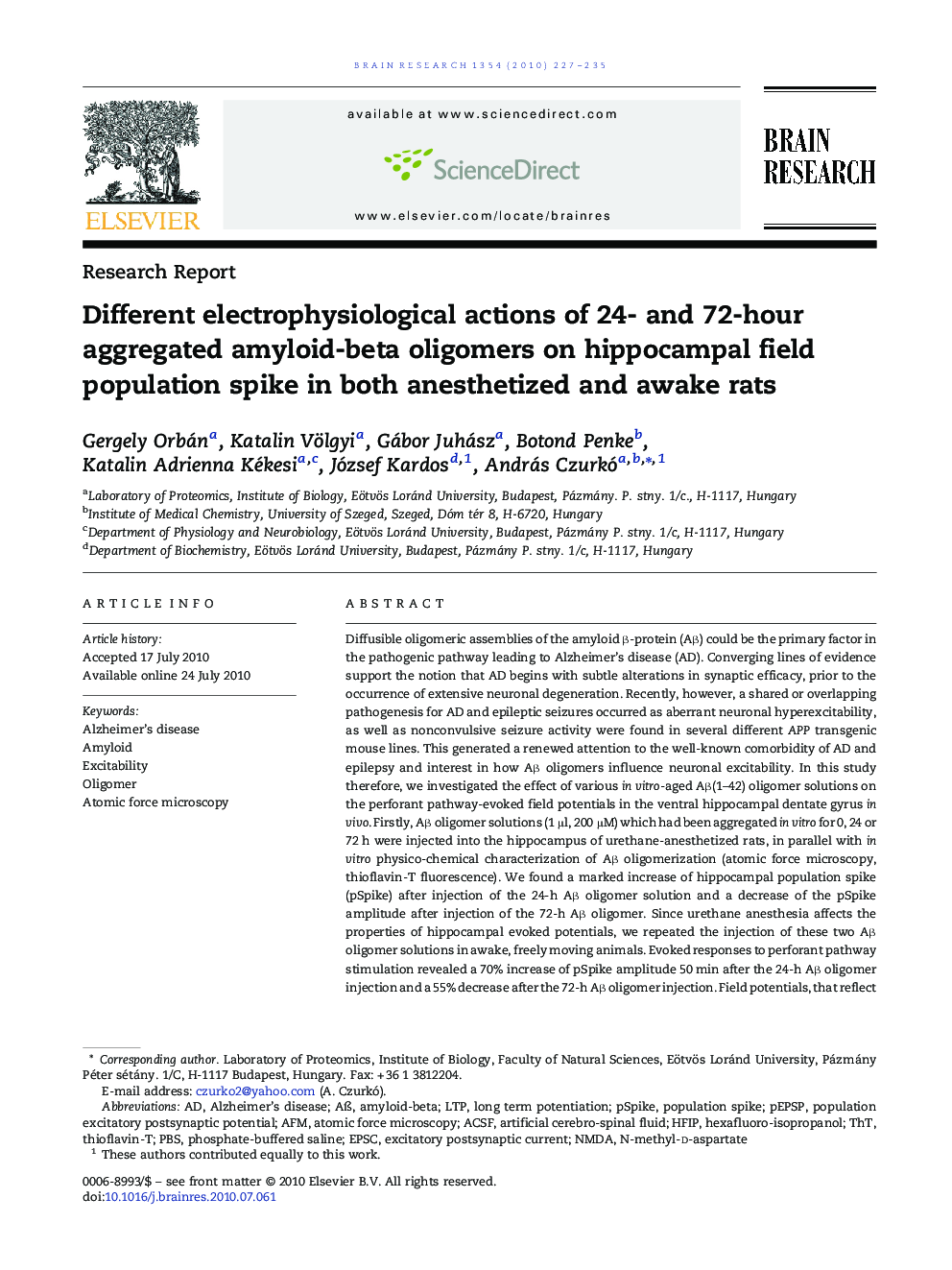| کد مقاله | کد نشریه | سال انتشار | مقاله انگلیسی | نسخه تمام متن |
|---|---|---|---|---|
| 4326594 | 1614085 | 2010 | 9 صفحه PDF | دانلود رایگان |

Diffusible oligomeric assemblies of the amyloid β-protein (Aβ) could be the primary factor in the pathogenic pathway leading to Alzheimer's disease (AD). Converging lines of evidence support the notion that AD begins with subtle alterations in synaptic efficacy, prior to the occurrence of extensive neuronal degeneration. Recently, however, a shared or overlapping pathogenesis for AD and epileptic seizures occurred as aberrant neuronal hyperexcitability, as well as nonconvulsive seizure activity were found in several different APP transgenic mouse lines. This generated a renewed attention to the well-known comorbidity of AD and epilepsy and interest in how Aβ oligomers influence neuronal excitability. In this study therefore, we investigated the effect of various in vitro-aged Aβ(1–42) oligomer solutions on the perforant pathway-evoked field potentials in the ventral hippocampal dentate gyrus in vivo. Firstly, Aβ oligomer solutions (1 μl, 200 μM) which had been aggregated in vitro for 0, 24 or 72 h were injected into the hippocampus of urethane-anesthetized rats, in parallel with in vitro physico-chemical characterization of Aβ oligomerization (atomic force microscopy, thioflavin-T fluorescence). We found a marked increase of hippocampal population spike (pSpike) after injection of the 24-h Aβ oligomer solution and a decrease of the pSpike amplitude after injection of the 72-h Aβ oligomer. Since urethane anesthesia affects the properties of hippocampal evoked potentials, we repeated the injection of these two Aβ oligomer solutions in awake, freely moving animals. Evoked responses to perforant pathway stimulation revealed a 70% increase of pSpike amplitude 50 min after the 24-h Aβ oligomer injection and a 55% decrease after the 72-h Aβ oligomer injection. Field potentials, that reflect synaptic potentials, were not affected by the Aβ injection. These results demonstrate that oligomeric Aβ aggregates elicit opposite electrophysiological effects on neuronal excitability which depend on their degree of oligomerization.
Research highlights
► Diffusible oligomeric assemblies of the amyloid β-protein (Aβ) could be the key pathogenic factor leading to Alzheimer's disease (AD).
► Different in vitro-aged and physico-chemically characterized Aβ(1–42) oligomer solutions differentially influenced population spike (pSpike) of the perforant pathway-evoked field potentials in the ventral hippocampal dentate gyrus in vivo.
► The 24-h Aβ oligomer solution increased the pSpike amplitude in both anesthetized and awake rats.
► The 72-h Aβ oligomer solution decreased the pSpike amplitude in both anesthetized and awake rats.
► The increased neuronal excitability after the 24-h Aβ oligomers could be related to the well-known comorbidity of AD and epilepsy
Journal: Brain Research - Volume 1354, 1 October 2010, Pages 227–235